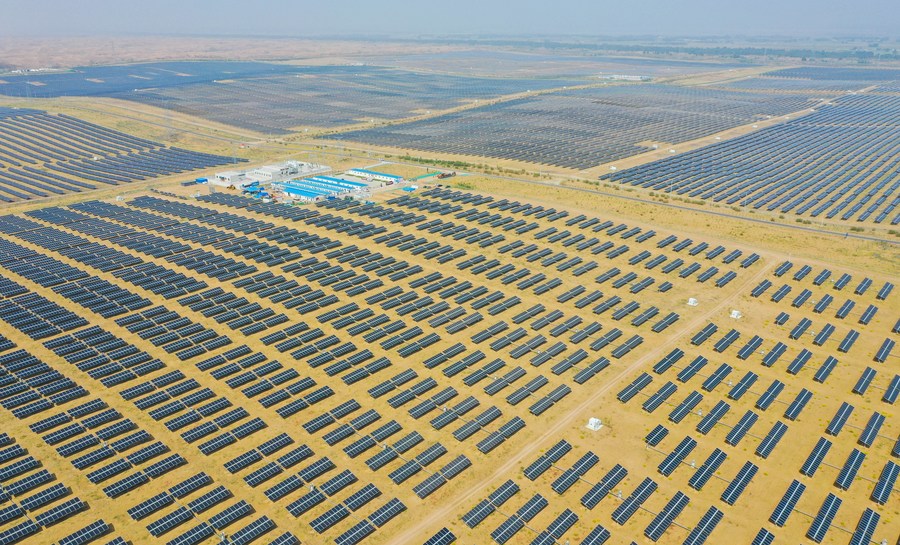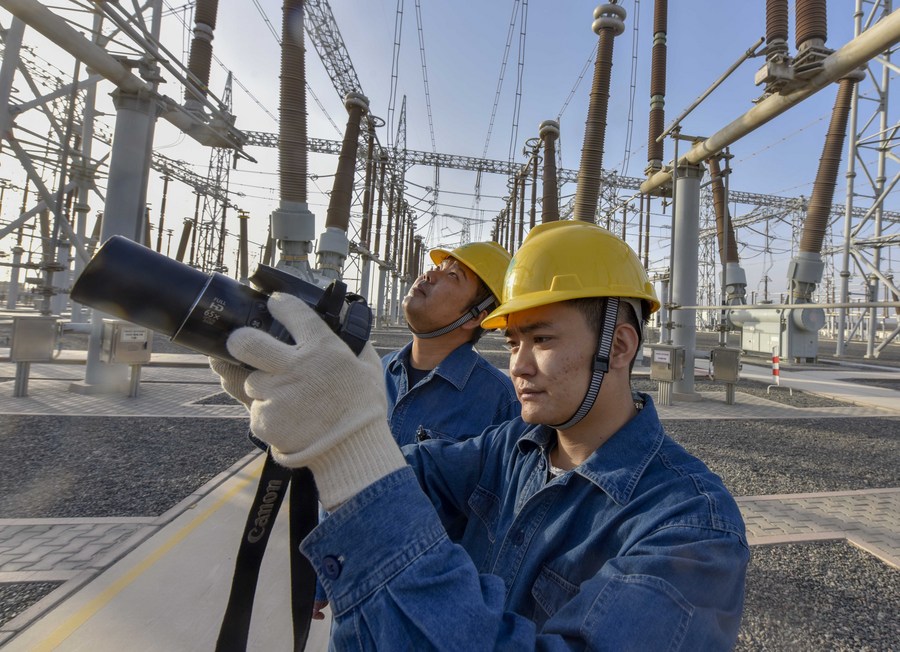On September 22, in a message to the UN General Assembly, Chinese President Xi Jinping announced that the country would strive for carbon neutrality by 2060. This marked the first time, since the Paris Agreement on climate change was reached in 2015, China revealed its ambitious goal with a specific timestamp.
In 2014, China released the National Plan on Climate Change 2014-2020. The targets set under the plan were achieved by the end of 2018, two years earlier than expected. Experts say considering the numerous measures China has taken, including adjusting industrial structures, optimizing energy mixes, improving energy efficiency, and promoting the construction of carbon markets, cutting carbon emissions to net zero by 2060 is realistic.

A residential community in Chengdu City, southwest China's Sichuan Province, September 15, 2020. /VCG
A residential community in Chengdu City, southwest China's Sichuan Province, September 15, 2020. /VCG
Aim low, achieve big
"Here in Europe, we reach for the stars, aim high and do what we can to get there. In China, there is a tradition of setting lower goals, and then you over-implement it. That history reassures me that they take it seriously," Jarl Krausing, international head of the Green think tank Concito, told Denmark's Politiken newspaper, adding China expects to replant an area equivalent to four times the size of England through its "existing plan."
Jeffrey Sachs, an economics professor at Columbia University and a senior UN adviser, said he expects China to achieve the goal even ahead of the stipulated date, "as China is in the process of establishing world-class technologies" in green energy and high-tech industries.
Many world leaders are keen to understand the details of how China plans to achieve this target, given the sheer size of China's energy consumption and emissions.
According to Climate Action Tracker (CAT), if China's goal is achieved, it will lower global warming projections by around 0.2 to 0.3 degrees Celsius alone, the biggest single reduction ever estimated by CAT.
Though the detailed plans hasn't been illustrated, China has already taken various measures to tackle the issue.
Different from other world economies, where petroleum is the biggest source of carbon dioxide emissions (petroleum contributes 44 percent of CO2 emissions in America and 36.7 percent in Japan), coal burning causes about 75 percent of greenhouse gas emissions in China, according to Global Carbon Atlas data (2008-2018). And coal produces up to twice the amount of carbon dioxide as other fossil fuels.

Aerial photo of the Dalad Photovoltaic Power Base in the Kubuqi Desert in north China's Inner Mongolia Autonomous Region, September 14, 2020. /Xinhua
Aerial photo of the Dalad Photovoltaic Power Base in the Kubuqi Desert in north China's Inner Mongolia Autonomous Region, September 14, 2020. /Xinhua
How to achieve?
To reduce the high concentration of coal-based emissions, China has made a concerted effort to adjust its industrial structure. In 2018, China's environment ministry introduced an action plan that requires 480 million tons of carbon capacity from steel production to meet "ultra-low emission" standards by 2020.
The country also upgraded its power grid with more efficient "ultra-supercritical" plants, which produce more energy with less coal. These plants will greatly raise the environmental standard. According to the Center for American Progress, by 2020, "every coal plant operating in the United States would be illegal to operate in China."
In 2016, a group of energy experts from the organization visited multiple coal facilities in China and interviewed engineers, plant managers, and local government officials working at the front lines of coal consumption. They found out that China's coal sector is undergoing a massive transformation that extends from the mines to the power plants.
The country promised the world to install 800 gigawatts to 1,000 gigawatts of new renewable capacity by 2030 under the Paris agreement, which is equivalent to the capacity of the entire U.S. electricity system. So far, China has 30 percent of the world's installed capacity of renewable energy, accounting for 44 percent of the world increase. However, China's total population is over four times than that of America, which means China needs far more energy than America.
Since adding the renewable equivalent of one entire U.S. electricity system is not enough to replace coal in the near future, China still has to use coal in the years and to bridge the gap, China is massively rolling out new technologies to reduce carbon emissions from the nation's remaining coal plants.

Staff members check the facilities at a transformer substation in Turpan, northwest China's Xinjiang Uygur Autonomous Region, September 18, 2018. /Xinhua
Staff members check the facilities at a transformer substation in Turpan, northwest China's Xinjiang Uygur Autonomous Region, September 18, 2018. /Xinhua
Additionally, the country also introduced policies to reduce household reliance on coal. In 2017, China's environment ministry guided four northern and central provinces to provide subsidies for more than three million families to install electric or gas heaters to take place of coal-fired stoves.
Other changes that will further reduce China's carbon dioxide emissions include encouraging electric vehicles and setting limits on fuel consumption on new vehicles. At the end of 2019, there were 3.81 million EVs on the road, totaling more than half of the world's total. And over 500 car models that did not meet strict fuel standards were suspended in 2018.
Beijing is working to cultivate public awareness of energy conservation and environment protection. The country educates the public through numerous events like the "Annual Nationwide Energy-Saving Publicity Week" or "Nationwide Decrease Carbon Day" and in many public occasions like bus, train and shopping malls.
Tree planting is also an ongoing project to cut emissions. China has contributed 25 percent to the increased afforestation areas worldwide since 2000, according to the Permanent Mission of China to the United Nations Wednesday.
The World Bank data also shows that China has saved 58 percent of the world's energy in the past 20 years.
(Editor: Yang Xuemin)